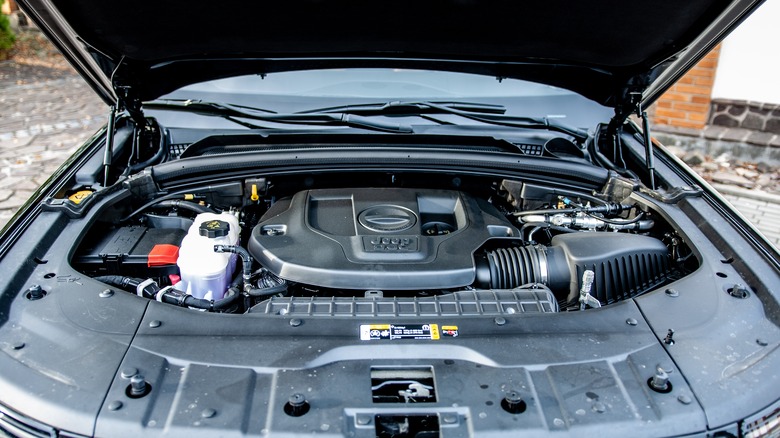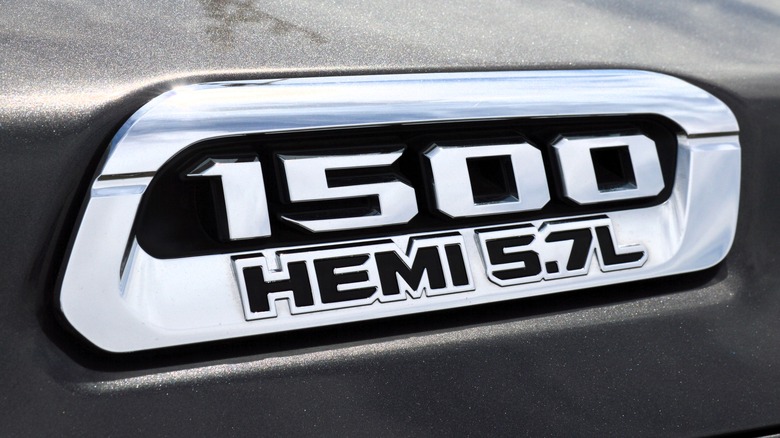
chorche de prigo/Shutterstock
By Eli Becht/
The Chrysler HEMI 5.7L engine is a very popular choice for engine swaps, provided you avoid the rough ones and pick a model from its the 5.7L HEMI’s best years. While it’s a solid engine at stock settings, a lot of owners like to throw on a turbo boost and get more performance from the engine, and that’s something the HEMI excels at.
Every engine has its limits, and that includes the HEMI 5.7L, but you can safely get up to 10.4 psi according to testing from MotorTrend. At that psi, the engine outputs 627 horsepower and 688 lb-ft of torque, so it’s a big leap over the stock settings of 345 horsepower and 390 lb-ft of torque. MotorTrend notes it stopped the boost here because of factory internals, but it’s with the caveat of saying there was still some extra performance being left on the table for people looking to push things even further.
As it turns out, there are owners who have gone past that 10.4 psi mark, but the results are mixed. Your mileage may vary, but if you’re willing to push your motor to its absolute limits, you can go further than what MotorTrend showed.
How much boost is possible for the HEMI 5.7L?

Around the World Photos/Shutterstock
A forum post dating back to 2011 asks people what types of boosts they’re seeing with their HEMI engines, and many of them are in line with what MotorTrend found. One user wrote they boosted their motor by 8 psi, but said they knew two people running a 10 psi boost with the engine still running smoothly. In another forum post, a poster says they read about an 18 psi HEMI engine, and while that might be possible, there’s little reason to suspect it’d be reliable on the road. With this type of boost, you could find yourself discovering far more than just the common 5.7L HEMI problems.
Another owner wrote saying they were at 11 psi — a number far off the 18 psi mark — for about 1,100 miles before running into issues. It appears your safe zone would be around the 10 psi mark, as that seems to be a common number owners report being fine at, and it’s within the range MotorTrend was able to reach. While you can find people pushing further behind, it typically opens the door up to problems that most owners won’t want to deal with. HEMI engines aren’t as prevalent as some other popular swaps like the LS engine, so blowing one up isn’t ideal as finding a replacement isn’t always cheap and easy.